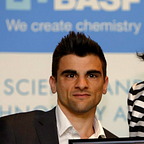With power law distributions, a few cases account for most of the total result. Given a big power law distribution, you want to be fairly concentrated. Here is the evidence.
Peter Thiel, described as the Don of the PayPal mafia and one of the best startup investors, states that the biggest secret in venture capital is that the best investment in a successful fund equals or outperforms the entire rest of the fund combined.
Peter Thiel states, from his startup class at Stanford:
A better model is to invest in maybe 7 or 8 promising companies from which you think you can get a 10x return. It’s true that in theory, the math works out the same if you try investing in 100 different companies that you think will bring 100x returns. But in practice that starts looking less like investing and more like buying lottery tickets.
Furthermore:
All else equal, having 1% of a company is better than having 0.5%. But the 100th employee at Google did much better than the average venture-backed CEO did in the last decade.
…
You have to be able to help portfolio companies in a differentiated way, such as leveraging your network on their behalf or advising them well.
…
Paradoxically, people who are heavily motivated by money are never the ones who make the most money in the power law world.
…
Question from audience: Do you back founders or ideas?
Paul Graham: Founders. Ideas are just indicative of how the founders can think. We look for relentlessly resourceful people. That combination is key.
…
A core founding team of two people with equal shares tends to work very well. Or sometimes it makes sense to have one brilliant founder that’s far and away above anyone else.
Think about the pareto’s principle: 80% of the output comes from 20% of the input.
— -
Correlation Ventures used data (21,640 financings) which showed over a 9 year period, only 35% of VC funds made any money after exit. I believe ignoring the power law distribution is the main reason why.
Given a big power law distribution, you want to be fairly concentrated.
Marc Andreessen, one of the best in Venture Capital, Co-Founder of Adreessen Horowitz (a16z) said: out of 200 startups per year he believes are fundable by VCs, 15 (7.5%) of them will return about 95% of all the economic returns.
A normal distribution is known as the bell curve. The professors who live by the bell curve adopted it for mathematical convenience, not realism. This reminds me of the saying: “In academia, there is no difference between academia and the real world. In the real world, there is a difference.” A great example of this is Long Term Capital Management, which was mathematical experts with PhDs who went bankrupt in 1998.
Another study done by a16z, using data from Horsley Bridge, showed that: 6% of investments representing 4.5% of dollars invested generated ~60% of the total returns
“Venture capital is not even a home run business. It’s a grand slam business.” — Bill Gurley, General Partner at Benchmark
“There are no profits for number 2 in technology.” — Ben Horowitz, Co-Founder of a16z, 2010
Warren Buffett — 20.3% per year over 54 years
Benjamin Graham, Warren Buffett’s mentor, made most of his money in Geico. He said:
“The aggregate of profits accruing from this single investment decision far exceeded the sum of all the others realized through 20 years of wide-ranging operations in the partners’ specialized fields, involving much investigation, endless pondering, and countless individual decisions.”
“Diversification is a protection against ignorance… there’s nothing wrong with that… it’s a confession that you don’t really understand the business.” — Warren Buffett
Cambridge Associates Data
Cambridge Associates used data from various periods and number of companies to produce these diagrams. This data shows that a very small percentage makes up most of the returns.
Another VC fund, named Version One, describe the first 7 years of their fund:
”Venture capital clearly follows a power law in which outliers drive most of the returns. This is particularly true with seed-stage investing. In our case, we think that up to four companies (out of 20) in our Fund I portfolio could be fund makers (companies that can at least pay back the whole fund). Combined, they will probably drive more than 75% of the fund’s returns.”
Naval Ravikant, one of the best startup investors, describes the power law as: “the top deal in a good portfolio returns as much as deals 2 through N combined”.
In the book “Secrets of Sand Hill Road: Venture Capital and How to Get It”, written by Managing Partner of Andreessen Horowitz Scott Kupor, he states that the performance of Venture Capital returns follows the power law curve.
